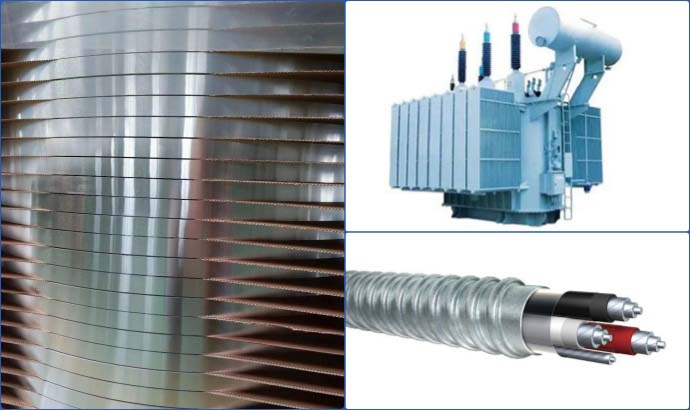- Email: sales@flait-aluminum.com
- Tel: 0086-13203837398
Materials: 1060, 1050, 1070, 1350
Temper: O/HO
Thickness: 0.08mm–3.0mm
Width: 20mm-1600mm
Resistivity: ≤ 0.028
ID: 300mm or 500mm
Surface: Smooth, no scratches, the edges can be chamfered (rounded corners, rounded edges) without burrs.
Packing: wooden pallet, eye to sky/eye to wall.

With the rapid development of the power industry, transformers, as the core equipment of the power grid, have more attention for their performance and safety. Transformer aluminum strip is an important part of the transformer, and its thickness and width standard specifications play an important role in improving the performance and safety of the transformer. Reasonable width and thickness of the aluminum strip can improve the conductivity, current carrying capacity, heat dissipation effect and ensure the normal operation of the transformer.
In transformers, aluminum strip is an important material, and the choice of its thickness and width have an important impact on the performance of the transformer. Usually, transformer aluminum strips are divided into different alloys, specifications, and tempers according to their uses. The main alloys are: 1060/A1060, 1050/A1050, 1070/A1070, 1350; tempers: O/HO (soft status); thickness: 0.08-3.00mm.
 1. Factors affecting aluminum strip thickness
1. Factors affecting aluminum strip thicknessThe selection of the thickness of the transformer aluminum strip is affected by many factors, such as the rated capacity of the transformer, operating voltage, winding structure, etc. The thickness of the transformer aluminum strip is directly related to its conductivity and current carrying capacity. Generally, the thickness of the aluminum strip foil should ensure sufficient electrical conductivity and meet the requirements of current carrying capacity.
 2. Transformer aluminum strip width
2. Transformer aluminum strip widthThe width of the transformer aluminum strip has a direct impact on current distribution, heat dissipation and current density. The width of the transformer aluminum strip should be determined according to the power, operating current and characteristics of the conductive material of the transformer. A reasonable width can ensure uniform distribution of current, improve heat dissipation effect, and keep the current density within a safe range.
 3. The relationship between the thickness and width of transformer aluminum strip
3. The relationship between the thickness and width of transformer aluminum stripThe thickness and width of the transformer aluminum strip have a certain relationship. First, the proportional relationship between the thickness and width of the aluminum strip can affect the quality and performance of the transformer. A ratio that is too large or too small will cause problems such as overheating and breakdown, which will affect the normal operation of the transformer. In addition, the thickness and width of the aluminum strip should be selected based on the power and design requirements of the transformer to achieve the best working condition.
 4. Standard specifications for different types of transformer aluminum strips
4. Standard specifications for different types of transformer aluminum stripsDepending on the type and purpose of the transformer, the standard specifications for its aluminum strips will also differ. For example, dry-type transformers and oil-immersed transformers may have different thickness, width and corresponding standard requirements for aluminum strips. Therefore, when selecting aluminum strips for transformers, it is not only necessary to consider the requirements of standard specifications, but also to select appropriate aluminum strips according to the specific type and purpose of the transformer.
Original Source:https://www.flait-aluminum.com/Transformer-Aluminum-Strip.html
Tags:1060 aluminum foil,1050 aluminum foil,1070 aluminum foil